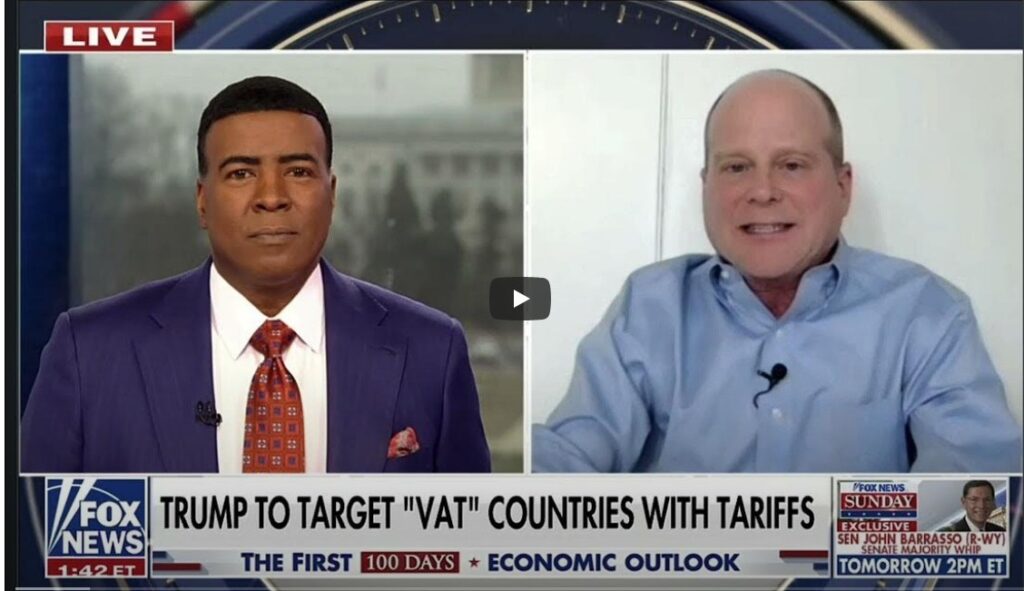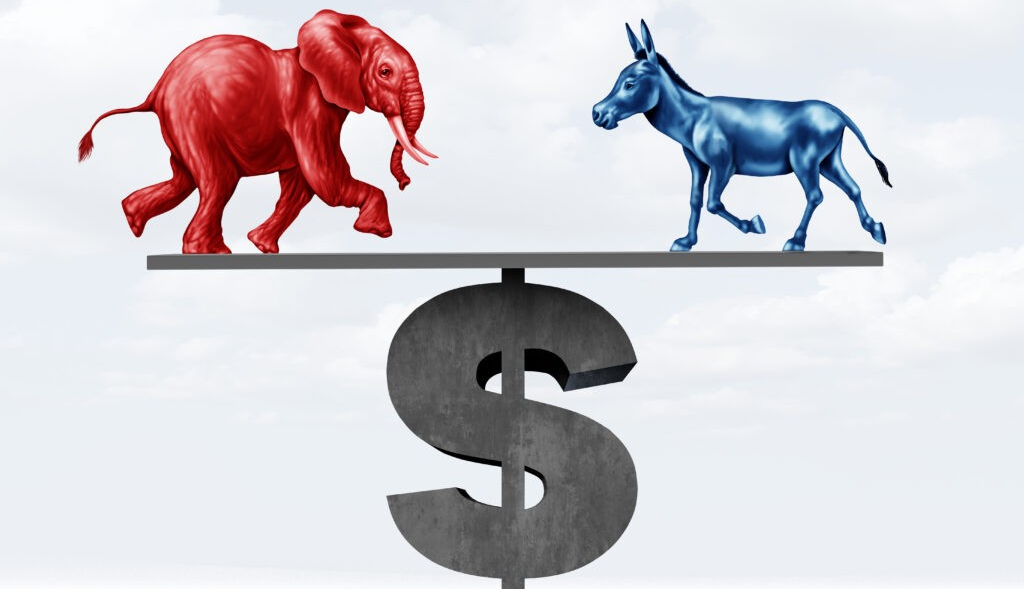AGMA & ABMA recognize that with the latest Executive Orders affecting trade and tariffs for domestic and international companies there is a great deal of uncertainty on how the supply chain for our industries will be impacted.
We are making it a priority to provide the most up-to-date information for our members about the important issues at hand. On this page you will find articles, curated webinars for the gear and bearing manufacturers, economic reports, forecasting information and so much more. We want to remain the periscope for our members regardless of what sector you are in and are here to help you navigate the many challenges ahead.
AGMA has both live and on-demand webinars with vital information and breaking news.

Gene Marks, renowned keynote speaker and national business columnist, discusses tariffs and inflation on Fox News Live.
Gene has been breaking down the impact of tariffs and inflation all year and discusses what it means for manufacturers where supply chain costs and global trade policies directly affect the bottom line.

Executive Orders – February 13, 2025
President Trump signed Executive Orders regarding “reciprocal” tariffs.
The key takeaways are:
- No additional tariffs immediately
- US trade agencies (primarily Commerce and USTR) are to study tariffs imposed by other countries on U.S. exports and recommend whether the US should impose comparable tariffs against US imports from those countries.
- Value-Added Tax and other tax regimes that US trading partners use but the US does not are potentially going to be included in the tariff rate calculations for those countries. Also potentially included are distortions in exchange rates caused by currency policies of some countries and “non-tariff barriers” such as regulatory requirements (e.g., REACH, country-specific standards) that are found to restrict market access opportunities of US exporters
- Recommendations are due to the president by April 1, 2025 – the same date as originally set in the “America First Trade Policy”
- Thereafter, the US trade agencies are to use their respective statutory authorities (e.g., Section 232, 301, etc.) to impose relevant and necessary remedies such as tariffs, quotas, or other measures
- On its face, this EO applies to all countries, but we may see exemptions for some (e.g., Australia) with which the United States maintains relatively balanced trade in goods.
Overall, this action signals the form that eventual additional U.S. trade measures may take – e.g., tariffs and quotas under existing statutory authorities – as well as, most importantly, that there will be a process and longer time horizon for interested parties to comment before such measures go into effect. Companies and investors with interests impacted by these issues should use this time to prepare data and other analyses and advocacy to support their interests.
News
-
President Trump Resets US Tariffs on Imports of Steel and Aluminum from All Countries
On 10 February 2025, President Trump announced that he was increasing tariffs on US imports of aluminum from 10% to…
-
Imposing Duties to Address the Synthetic Opioid Supply Chain in the People’s Republic of China
On February 5, 2025, the Secretary of Homeland Security issued a notice in the Federal Register (90 FR 9038),…
-
Imposing Duties to Address the Situation at Our Southern Border
On February 1, President Trump signed executive orders imposing additional tariffs on Canada, Mexico, and China under the International Emergency…
Webinars
-

Trade and Tax Policy Update II
Join us on April 30 for part two of our trade and policy update. At the culmination of the first 100 days of the Trump Administration, our trade and tax…
-

US National Security Policy Update
Join us on March 26 to find out what is next in U.S. national security policy and the prospects for cooperation and investment opportunities in the Indo-Pacific and beyond.
-

Trade and Tax Policy Update
Join us on February 26 for this update on the latest state of play in Washington, DC regarding tariffs, tax legislation, and related areas impacting companies in the bearing and…
-

2024 Election Results and US Trade and Investment Update: What to expect for the first 100 days of the second Trump Administration
In this webinar, we will unpack the results of the November 2024 election and what they mean for US trade and investments in US energy, transportation, and manufacturing sectors in…
-

Asia-Pacific Security Policy and What Future Developments in the Region Mean for Bearing and Gear Companies
Defense budgets and investments in security arrangements are accelerating as tensions rise across the Asia-Pacific region from Taiwan to the South China Sea to the Pacific Islands and beyond. In…
-

Key Trade Issues for Decision 2024
As the 2024 election cycle kicks into high gear, we examine the positions of the candidates on trade, tariffs, and investments in U.S. manufacturing and what the election is likely…
AGMA and ABMA have partnered with Nate Bolin, Partner, K&L Gates, as our subject matter expert on all thigs related to trade and tariffs.

Nathaniel B. Bolin
Partner, K&L Gates
For more than 20 years, Nate Bolin has advised and represented US and global clients on export controls, economic sanctions, trade remedies, customs and tariffs, and related areas of national security and international trade laws. Nate has extensive experience with the trade and national security laws and policies governing advanced and emerging technologies in the aerospace, advanced materials, chemicals, defense, medical, oil and gas, semiconductor, telecommunications, and transportation industries. He also regularly helps clients successfully navigate the complex Committee on Foreign Investment in the United States (CFIUS) process and national security issues involving investments and cross-border transactions.